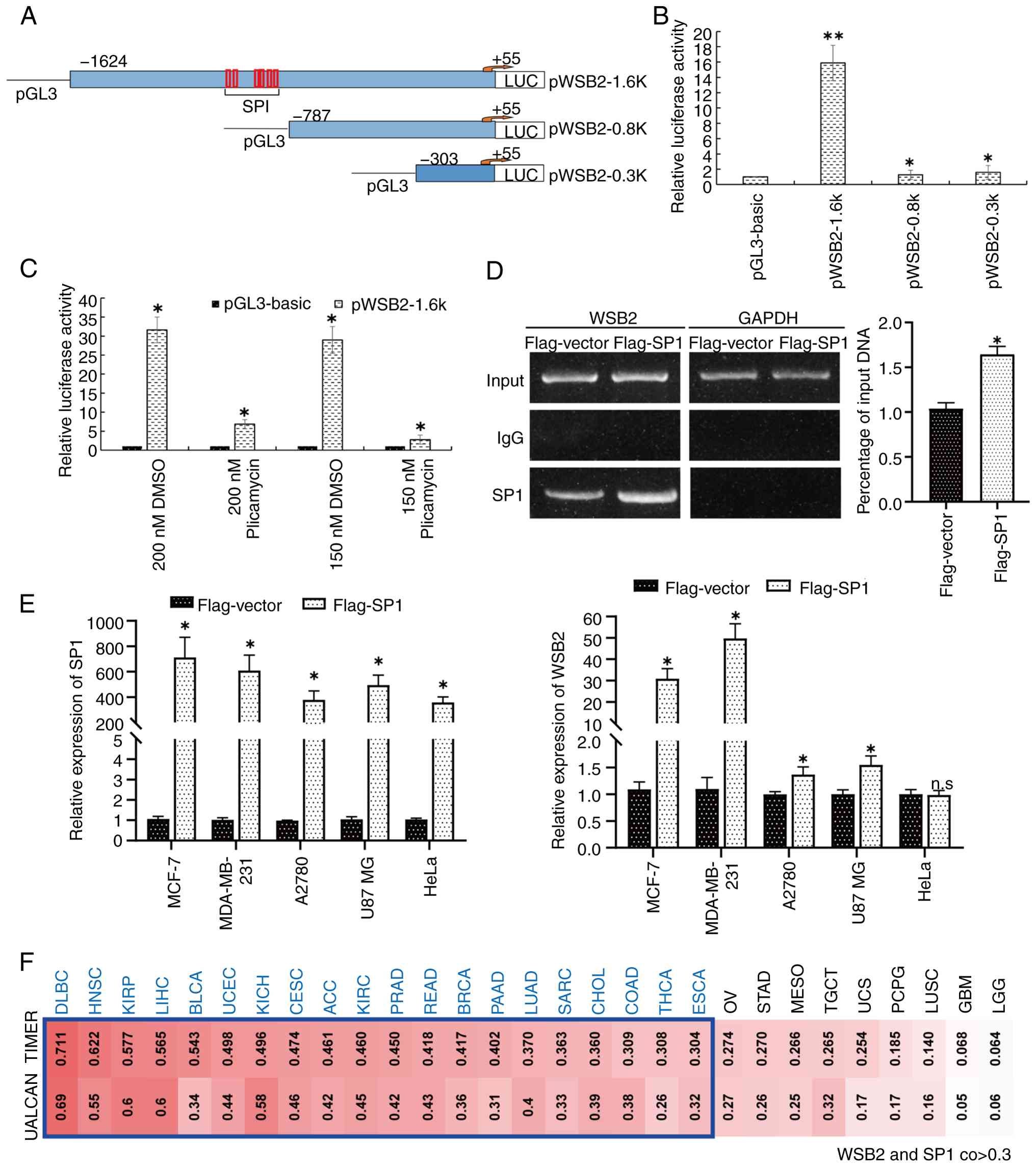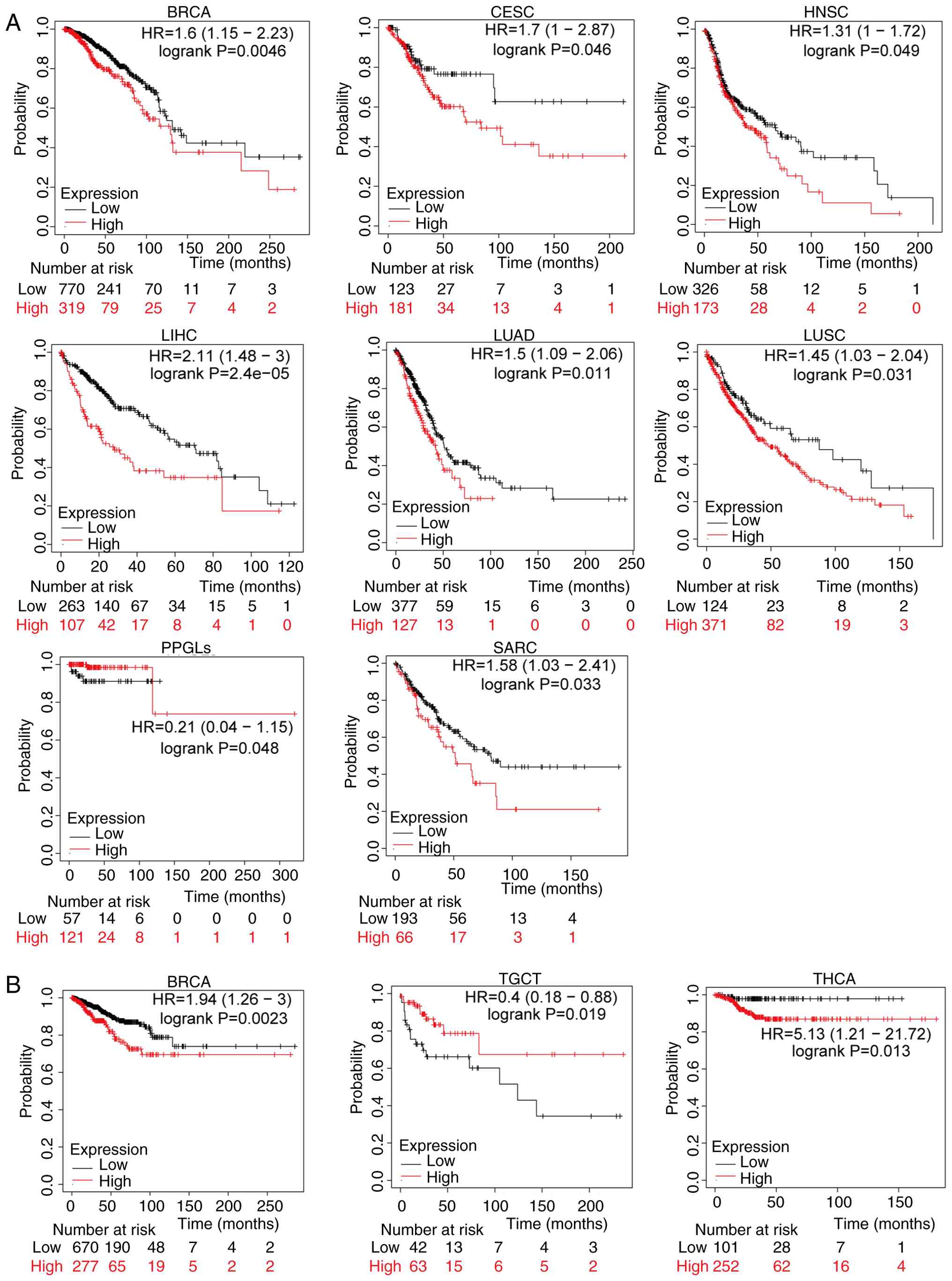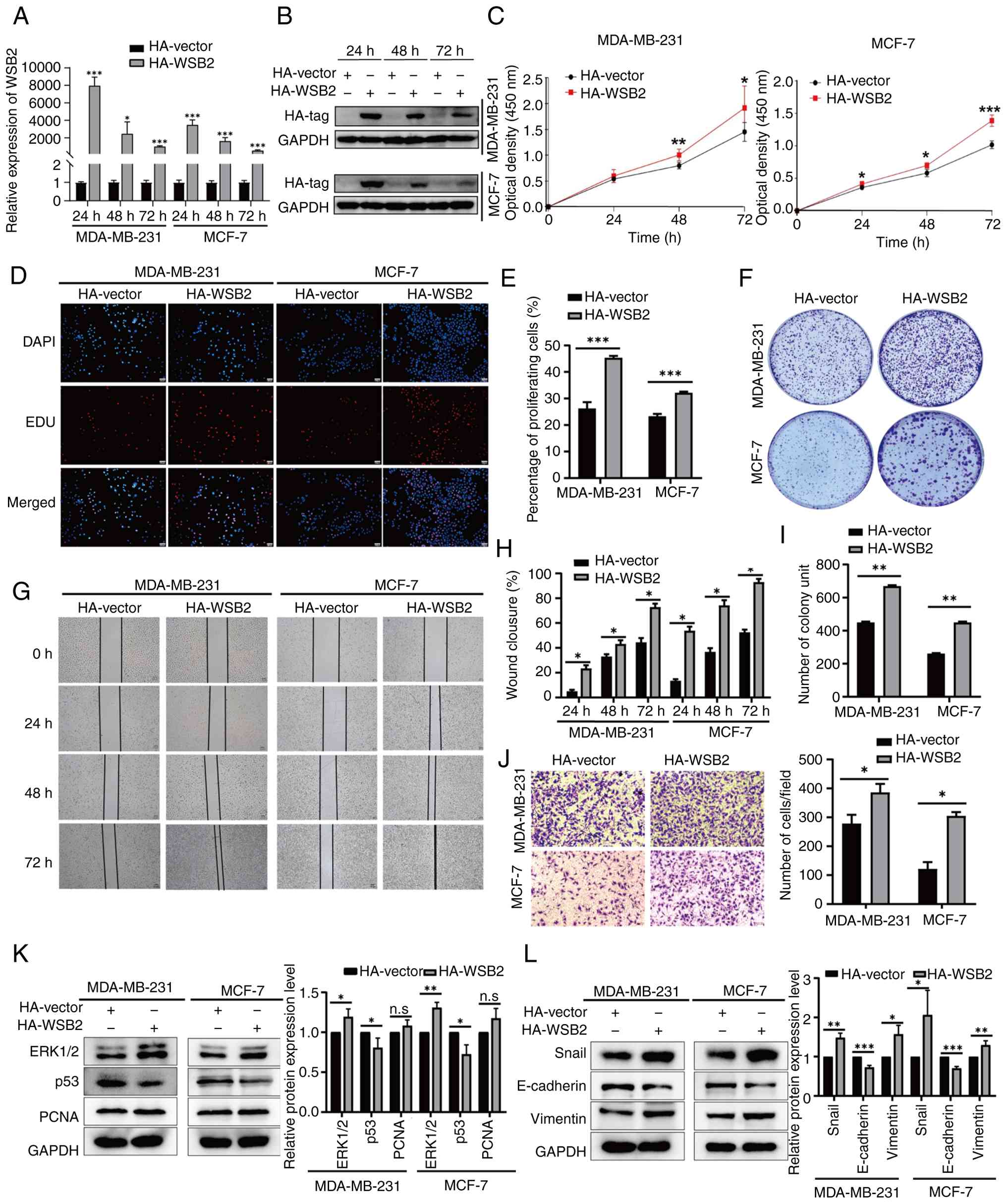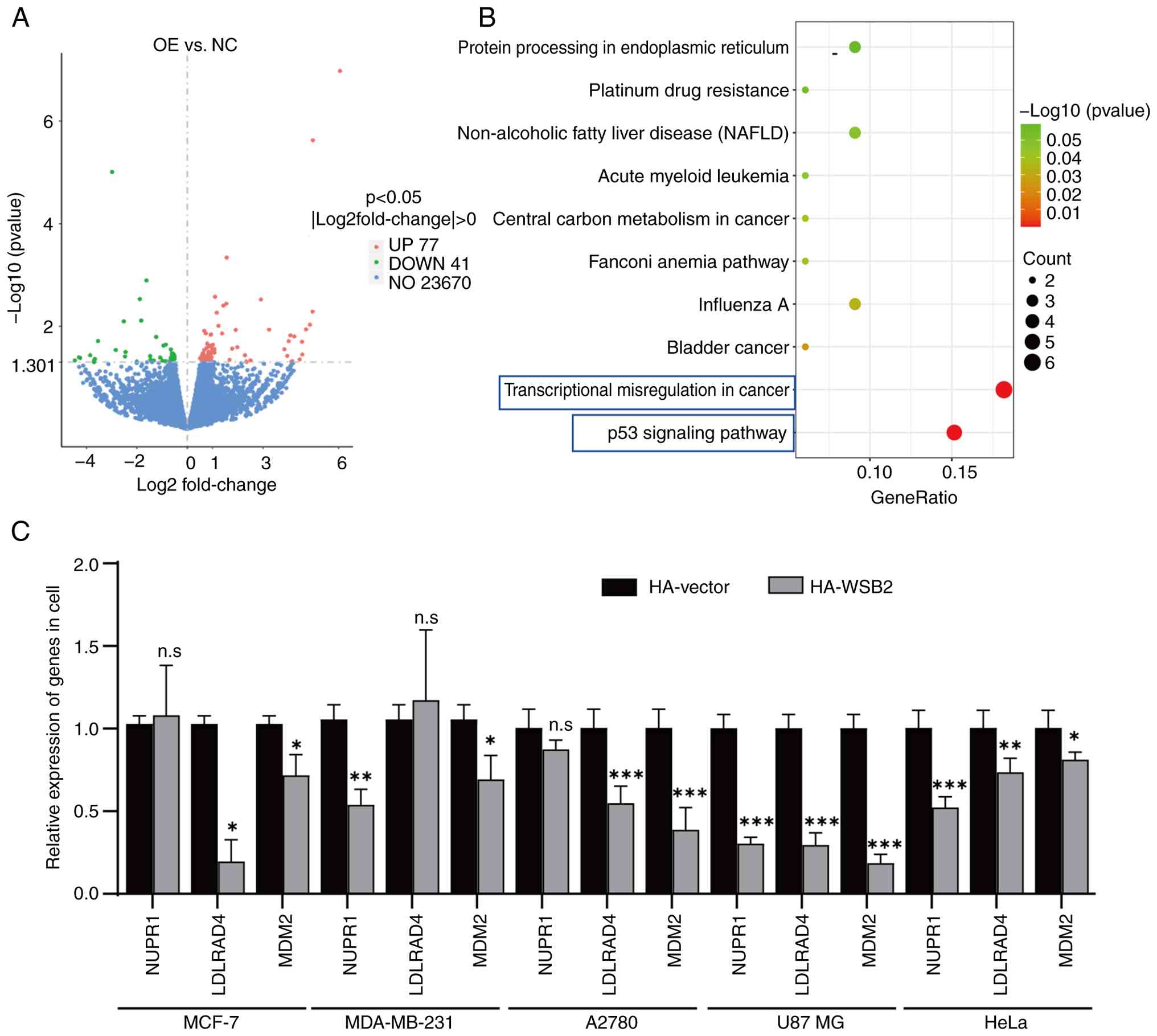|
1
|
Miller KD, Nogueira L, Devasia T, Mariotto
AB, Yabroff KR, Jemal A, Kramer J and Siegel RL: Cancer treatment
and survivorship statistics, 2022. CA Cancer J Clin. 72:409–436.
2022.PubMed/NCBI
|
|
2
|
Hu C, Li Q, Xiang L, Luo Y, Li S, An J, Yu
X, Zhang G, Chen Y, Wang Y and Wang D: Comprehensive pan-cancer
analysis unveils the significant prognostic value and potential
role in immune microenvironment modulation of TRIB3. Comput Struct
Biotechnol J. 23:234–250. 2023. View Article : Google Scholar : PubMed/NCBI
|
|
3
|
Kirchhammer N, Trefny MP, Auf der Maur P,
Läubli H and Zippelius A: Combination cancer immunotherapies:
Emerging treatment strategies adapted to the tumor
microenvironment. Sci Transl Med. 14:eabo36052022. View Article : Google Scholar : PubMed/NCBI
|
|
4
|
Zhang Y, Li Z, Zhao W, Hu H, Zhao L, Zhu
Y, Yang X, Gao B, Yang H, Huang Y and Song X: WD repeat and SOCS
box containing protein 2 in the proliferation, cycle progression,
and migration of melanoma cells. Biomed Pharmacother.
116:1089742019. View Article : Google Scholar : PubMed/NCBI
|
|
5
|
Yu L, Gaitatzes C, Neer E and Smith TF:
Thirty-plus functional families from a single motif. Protein Sci.
9:2470–2476. 2000. View Article : Google Scholar : PubMed/NCBI
|
|
6
|
Jain BP and Pandey S: WD40 repeat
proteins: Signalling scaffold with diverse functions. Protein J.
37:391–406. 2018. View Article : Google Scholar : PubMed/NCBI
|
|
7
|
Kim JJ, Lee SB, Jang J, Yi SY, Kim SH, Han
SA, Lee JM, Tong SY, Vincelette ND, Gao B, et al: WSB1 promotes
tumor metastasis by inducing pVHL degradation. Genes Dev.
29:2244–2257. 2015. View Article : Google Scholar : PubMed/NCBI
|
|
8
|
Kim JJ, Lee SB, Yi SY, Han SA, Kim SH, Lee
JM, Tong SY, Yin P, Gao B, Zhang J and Lou Z: WSB1 overcomes
oncogene-induced senescence by targeting ATM for degradation. Cell
Res. 27:274–293. 2017. View Article : Google Scholar : PubMed/NCBI
|
|
9
|
Ma L, Zhang Y and Hu F: miR-28-5p inhibits
the migration of breast cancer by regulating WSB2. Int J Mol Med.
46:1562–1570. 2020.PubMed/NCBI
|
|
10
|
Li X, Zhang CC, Lin XT, Zhang J, Zhang YJ,
Yu HQ, Liu ZY, Gong Y, Zhang LD and Xie CM: Elevated expression of
WSB2 degrades p53 and activates the IGFBP3-AKT-mTOR-dependent
pathway to drive hepatocellular carcinoma. Exp Mol Med. 56:177–191.
2024. View Article : Google Scholar : PubMed/NCBI
|
|
11
|
Zhou H, Lv Q and Guo Z: Transcriptomic
signature predicts the distant relapse in patients with ER+ breast
cancer treated with tamoxifen for five years. Mol Med Rep.
17:3152–3157. 2018.PubMed/NCBI
|
|
12
|
Erkeland SJ, Aarts LH, Irandoust M,
Roovers O, Klomp A, Valkhof M, Gits J, Eyckerman S, Tavernier J and
Touw IP: Novel role of WD40 and SOCS box protein-2 in steady-state
distribution of granulocyte colony-stimulating factor receptor and
G-CSF-controlled proliferation and differentiation signaling.
Oncogene. 26:1985–1994. 2007. View Article : Google Scholar : PubMed/NCBI
|
|
13
|
Zhang J, Yu Y, Zou X, Du Y, Liang Q, Gong
M, He Y, Luo J, Wu D, Jiang X, et al: WSB1/2 target chromatin-bound
lysine-methylated RelA for proteasomal degradation and NF-κB
termination. Nucleic Acids Res. 52:4969–4984. 2024. View Article : Google Scholar : PubMed/NCBI
|
|
14
|
Chen J, Chen X, Cai H, Yang Y, Zhu Q, Sun
D and Gao C: The ubiquitination degradation of KLF15 mediated by
WSB2 promotes lipogenesis and progression of hepatocellular
carcinoma via inhibiting PDLIM2 expression. J Gastroenterol
Hepatol. 40:192–207. 2025. View Article : Google Scholar : PubMed/NCBI
|
|
15
|
Li T, Fan J, Wang B, Traugh N, Chen Q, Liu
JS, Li B and Liu XS: TIMER: A web server for comprehensive analysis
of tumor-infiltrating immune cells. Cancer Res. 77:e108–e110. 2017.
View Article : Google Scholar : PubMed/NCBI
|
|
16
|
Chandrashekar DS, Karthikeyan SK, Korla
PK, Patel H, Shovon AR, Athar M, Netto GJ, Qin ZS, Kumar S, Manne
U, et al: UALCAN: An update to the integrated cancer data analysis
platform. Neoplasia. 25:18–27. 2022. View Article : Google Scholar : PubMed/NCBI
|
|
17
|
Pontén F, Schwenk JM, Asplund A and
Edqvist PH: The human protein atlas as a proteomic resource for
biomarker discovery. J Intern Med. 270:428–446. 2011. View Article : Google Scholar : PubMed/NCBI
|
|
18
|
Goel MK, Khanna P and Kishore J:
Understanding survival analysis: Kaplan-Meier estimate. Int J
Ayurveda Res. 1:274–278. 2010. View Article : Google Scholar : PubMed/NCBI
|
|
19
|
Livak KJ and Schmittgen TD: Analysis of
relative gene expression data using real-time quantitative PCR and
the 2(−Delta Delta C(T)) Method. Methods. 25:402–408. 2001.
View Article : Google Scholar : PubMed/NCBI
|
|
20
|
Hu F, Meng Y, Gou L and Zhang X: Analysis
of promoters and CREB/AP-1 binding sites of the human TMEM174 gene.
Exp Ther Med. 6:1290–1294. 2013. View Article : Google Scholar : PubMed/NCBI
|
|
21
|
Hu F, Meng X, Tong Q, Liang L, Xiang R,
Zhu T and Yang S: BMP-6 inhibits cell proliferation by targeting
microRNA-192 in breast cancer. Biochim Biophys Acta.
1832:2379–2390. 2013. View Article : Google Scholar : PubMed/NCBI
|
|
22
|
Wang J, Zou Y, Guan R, Tan S, Su L, Zhao
Z, Cao Z, Jiang K, Wang T and Zheng G: Copper supplementation
alleviates hypoxia-induced ferroptosis and oxidative stress in
neuronal cells. Int J Mol Med. 54:1172024. View Article : Google Scholar : PubMed/NCBI
|
|
23
|
Hu F, Zhang Y, Li M, Bai Y and Zhang X:
Expression and role of HEPIS in breast cancer. Oncol Lett.
18:6648–6656. 2019.PubMed/NCBI
|
|
24
|
Li J, Jiang H, Lv Z, Sun Z, Cheng C, Tan
G, Wang M, Liu A, Sun H, Guo H, et al: Articular
fibrocartilage-targeted therapy by microtubule stabilization. Sci
Adv. 8:eabn84202022. View Article : Google Scholar : PubMed/NCBI
|
|
25
|
Zhang X, Hao L, Meng L, Liu M, Zhao L, Hu
F, Ding C, Wang Y, He B, Pan Y, et al: Digital gene expression tag
profiling analysis of the gene expression patterns regulating the
early stage of mouse spermatogenesis. PLoS One. 8:e586802013.
View Article : Google Scholar : PubMed/NCBI
|
|
26
|
Kanehisa M and Goto S: KEGG: Kyoto
encyclopedia of genes and genomes. Nucleic Acids Res. 28:27–30.
2000. View Article : Google Scholar : PubMed/NCBI
|
|
27
|
Lambert SA, Jolma A, Campitelli LF, Das
PK, Yin Y, Albu M, Chen X, Taipale J, Hughes TR and Weirauch MT:
The human transcription factors. Cell. 172:650–665. 2018.
View Article : Google Scholar : PubMed/NCBI
|
|
28
|
Gothe HJ, Bouwman BAM, Gusmao EG, Piccinno
R, Petrosino G, Sayols S, Drechsel O, Minneker V, Josipovic N, Mizi
A, et al: Spatial chromosome folding and active transcription drive
DNA fragility and formation of oncogenic MLL translocations. Mol
Cell. 75:267–283.e12. 2019. View Article : Google Scholar : PubMed/NCBI
|
|
29
|
Lu F and Lionnet T: Transcription factor
dynamics. Cold Spring Harb Perspect Biol. 13:a0409492021.
View Article : Google Scholar : PubMed/NCBI
|
|
30
|
Moore LD, Le T and Fan G: DNA methylation
and its basic function. Neuropsychopharmacology. 38:23–38. 2013.
View Article : Google Scholar : PubMed/NCBI
|
|
31
|
Vellingiri B, Iyer M, Devi Subramaniam M,
Jayaramayya K, Siama Z, Giridharan B, Narayanasamy A, Abdal Dayem A
and Cho SG: Understanding the role of the transcription factor Sp1
in ovarian cancer: From theory to practice. Int J Mol Sci.
21:11532020. View Article : Google Scholar : PubMed/NCBI
|
|
32
|
Vizcaíno C, Mansilla S and Portugal J: Sp1
transcription factor: A long-standing target in cancer
chemotherapy. Pharmacol Ther. 152:111–124. 2015. View Article : Google Scholar : PubMed/NCBI
|
|
33
|
Zhang M, Lu K, Wei G, Xiao G, Tong L and
Chen D: Multiple cullin-associated E3 ligases regulate cyclin D1
protein stability. Elife. 12:e803272023. View Article : Google Scholar : PubMed/NCBI
|
|
34
|
Nara H, Onoda T, Rahman M, Araki A,
Juliana FM, Tanaka N and Asao H: Regulation of interleukin-21
receptor expression and its signal transduction by WSB-2. Biochem
Biophys Res Commun. 392:171–177. 2010. View Article : Google Scholar : PubMed/NCBI
|
|
35
|
Yang Z, Jia Y, Wang S, Zhang Y, Fan W,
Wang X, He L, Shen X, Yang X, Zhang Y and Yang H:
Retinoblastoma-binding protein 5 regulates H3K4 methylation
modification to inhibit the proliferation of melanoma cells by
inactivating the Wnt/β-catenin and epithelial-mesenchymal
transition pathways. J Oncol. 2023:50939412023. View Article : Google Scholar : PubMed/NCBI
|















